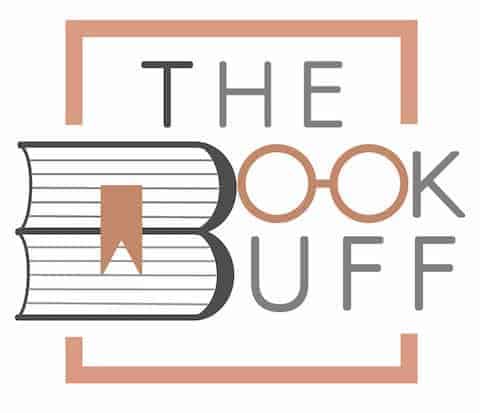Can You Improve Your Reading Speed? Here’s What to Know!
Disclosure: This post may contain affiliate links. – meaning I may get a commission if you decide to purchase through my links, at no additional cost to you.
Reading speed is quintessential when you are reading for learning or even just for entertainment purposes. Faster reading speed can be a huge advantage. But, can you really improve your reading speed?
You can improve your reading speed in a range of 20% to 50% by reading more and practicing speed reading techniques such as scanning and skimming. Tracking the time it takes to read a page can help measure the progress. Ensure that you maintain comprehension as you increase your reading speed.
Having the ability to read faster takes quite a bit of effort. And, the process starts with knowing what to do!
So, in this article, we’ll understand the complete process at a high level. Rest assured, I will also provide you with relevant articles in case you would like to dive deeper into the subject!
So, let’s get started!
Pro Tip! If you want to improve your reading speed, I’d highly recommend you to check out this speed reading course. It is perfectly suited for beginners! It is very affordable and comes with a 60-day full money-back guarantee! So, you have nothing to lose!
Is it Possible to Increase Your Reading Speed as an Adult?
Learning is usually at its peak in a child. When you become an adult, the speed with which you improve your existing skills typically decreases. This may make you wonder whether it is even possible to increase your reading speed as an adult!
Generally speaking, you can increase your reading speed even as an adult. Using speed reading techniques like scanning and skimming, you can train your brain to read faster. Over time, you will notice an increase in your reading speed with practice.
That said, you may want to start off by knowing what your current reading levels are!
How to Check Your Reading Speed?
There are multiple ways to check your reading speed.
One way to check your reading speed is to calculate it manually. You can use a timer to see how long you take to read a page of a book. Then calculate the approximate number of words on the page.
You don’t have to count every single word on the page. Simply calculate the number of words in the first line and multiply it by the number of lines present on the page.
Once you have identified the number of words on the page, simply divide it by the time you took to finish reading the page. Make sure to convert the time to fractions correctly by dividing the number of seconds by 60 to convert it to minutes.
Alternatively, you can also use one of many free reading speed test software available online to check your reading speed.
This is perhaps the easiest method to calculate your reading speed effectively.
What is Regarded as Normal Reading speed?

Is there something like a “normal” reading speed? Yes, although a person’s reading speed depends on many factors, researchers have found a way to determine what can be called a normal reading speed.
The average reading speed of a reader is usually in the range of about 200 to 250 words per minute. Most average readers are also able to maintain comprehension levels of about 60% to 70%.
Based on what we know about the properties of eye movement and text, we can try to decipher the typical reading speed of an average human.
When you read, your eyes fixate on letters in the text and then move on to the next fixation, and so forth. Researchers have found that an average reader fixates on about 7 to 8 letters with each fixation and that every fixation lasts around 200 to 250 milliseconds.
This means the average reader experiences about 240 fixations per minute, and thus sees more or less 1,680 letters per minute. As words in the normal text on average have 5 to 7 letters, it is calculated that an average reader reads in the range of about 200 to 250 words per minute.
This is regarded as the reading speed for “normal” readers.
But the researchers have also found frequent readers who can read between 400 and 600 words per minute, and exceptional good readers who can read up to 1,000 words per minute and still comprehend most of what they are reading!
Obviously, reaching such high reading speeds requires a lot of practice and needs you to read a lot!
If you are slower than usual, it is also important that you first understand the reason behind your slow reading speed before you start working towards improving it.
Reasons for Slow Reading Speed
There are various reasons for a slow reading speed. Let’s look at a few.
1. Physical Reasons
One reason why you read slower than other people may be a physical problem. You may have an eye defect that influences the width of the fixations your eyes make when reading. It is clear from the calculations above that if your eyes fixate on fewer letters than the norm, you will read slower.
2. Sub-vocalization
However, the most common reason why people’s reading speed is slow is that they pronounce every word in their head even when they are not reading out loud.
They actually “hear” themselves reading in their mind. This process is called sub-vocalization. This slows down reading and comprehension as we understand words more quickly than we can say them.
3. Regressive Eye Movements
Even when you’ve mastered the technique to eliminate sub-vocalization, your eyes are often going back to the beginning of a sentence and read it again – either the separate words or in blocks.
The reason for these regressive eye movements is that when the brain can’t comprehend a difficult sentence it inevitably takes your eyes back to the beginning of the sentence to grasp the essence of the sentence. This has a negative influence on your reading speed.
4. Lack of Focus
Another reason for slow reading is that you don’t fully concentrate on your reading. This can also be due to diverse reasons.
The environment where you are reading might be reader-unfriendly. There might be a lot of noises or other distractions. Sometimes you’re just not interested in what you are reading and your focus is not on the book or document.
How to Increase Your Reading Speed?

You can increase your reading speed by increasing the speed of your eye movements, the eye fixation width i.e. reading more letters in each eye movement, and reducing subvocalization i.e. minimizing reading to yourself. Improving your focus will also help in increasing your reading speed.
All the factors mentioned above require a lot of practice. You will need to consistently keep reading in order to improve your performance across the aforementioned factors.
Fortunately, there are a few ways and techniques that can help you enhance your reading speed and improve your performance on the above factors.
1. Learn to Read in Blocks and not Individual Words
You can begin to enhance your reading speed by practicing to widen the scope of your letter fixation. If you see larger sections of letters you simultaneously slow down the sub-vocalization process.
The wider the fixation, the more your brain processes blocks of letters and words rather than individual words.
To expand your gaze, relax your face when you are reading. When your face is relaxed, your eyes automatically expand their view and you can focus on blocks of words.
It also helps if you let your peripheral vision takes you to the final set of words as you approach the end of each line. This makes the pauses in your reading fewer. The more you practice this, the faster your eyes will skip across the pages.
2. Eliminate Regressive Eye Movements
You can reduce the regressive movements of your eyes by always concentrate on reading the next words or phrases in the sentence. You have to consciously control your eye movement.
The more you succeed in doing this, the faster your reading speed will become.
3. Follow the Pointer Method
With the pointer method, you hold a card under each line and draws it down the page as you read. Your finger works just as well if you don’t want to read with a card.
As you “force” your eyes to follow the card or your finger to the next line you not only enhance your reading speed but also reduce the possibility of skipping back to re-read sentences.
4. Use the Tracker-and-Pacer Method
The tracker-and-pacer method is a variation of the pointer method.
Instead of drawing a card or your finger down every line, you use a pen with its cap still on and underline and track each line as you read it.
If you keep your eye above the tip of the pen it will help to increase the pace at which you read each line. If you want to, you can actually underline the words as you read.
Try to reach a speed of about one second per line as soon as possible. When you’ve succeeded in reaching one second per line keep on trying to increase the speed you read a line every time you read.
5. The Previewing Method
This method doesn’t necessarily improve your reading speed as such, but it is a method to grasp the content of a book or document very quickly.
With the previewing method, you go through your book or documents twice. The first reading involves what is called “scanning” and then you read the book again.
With the first reading, you go through a page of the book or document by scanning a page from top to bottom to recognize and find specific keywords and phrases. You are not interested in parts of the text where the keywords are not relevant.
This helps you to identify sections in the book you have to read again more carefully.
It may seem as though you’re wasting time with the previewing, but it actually saves you a lot of time in total as you only focus on the text parts that matter when you read the book from the beginning again. After the preview, you will already have a basic understanding of what to look for.
Previewing is a technique that requires a lot of concentration, especially when you are still practicing to get used to it.
6. Use Skimming
Skimming is different from “scanning.”
Skimming is when you only read the text to understand the thesis statement. You use it when you want to gain a general idea about the text without bothering with the intentional and detailed meaning of the text.
In reality, you are not reading all the words but read just enough for your brain to comprehend what the book or document is about. People often use this method when they have to get a good idea of the content in a document but have only very limited time to read it.
7. Eye Movement Exercises
Lastly, you also want to make sure that you improve the speed of your eye movements as this can help you move from one block of words to another much faster!
There are quite a few free eye movement exercises that are available on the web which will help you with the reading speed.
Make sure that you don’t practice more than 10 minutes a day or if you feel pain in your eyes. Ensure that you don’t strain your eyes in the process.
How Long Does it Take to Improve Your Reading Speed?
On average, it takes about 10 to 15 weeks of regular practice of 2 hours of reading everyday to see a marked improvement in your reading speed. Marginal improvements can be seen within 5 to 7 days of practicing. It can take 2 to 3 years of regular reading to reach the peak of your improvement cycle.
It takes time to master a technique to improve your reading speed. Whatever method you are following, in one way or another you have to change a habit, and this takes time.
Long term practice can show substantial improvements in your reading speeds. However, it is important to not just read but follow some of the reading techniques highlighted above while reading. Otherwise, the gains observed will not be as substantial.
Once you reach the peak of your improvement cycle, you will notice that the increment in your reading speed starts to plateau.
The more you practice, the quicker you will experience an increase in your reading speed. So, you have to read a lot, to read faster!
However, if you stop reading once you reach the peak of your reading speed, gradually your reading speed may start to decline over time! Thus, it is important to continue read regularly even after you’ve increased your reading speed.
Does Speed Reading Affect Comprehension?
When you improve your reading speed it is not necessarily true that you will comprehend better. On the contrary, research has shown that the faster you read the more you compromise comprehension.
However, with the correct techniques, you can improve your reading speed along with comprehension. This does put a limit to how much your reading speed can improve.
Thus, beyond a point, you can’t keep on improving your reading speed without compromising comprehension. This level varies from person to person.
When you can’t remember enough of the content that you’ve read, you’re reading too fast. You have to get a balance between an increased reading speed and too much sacrificing of comprehension.
Is it Necessary to Improve Your Reading Speed?
If you just want to improve your reading speed because you think everybody else is reading faster than you, there is no reason to try and read faster.
It is only when your reading speed is hampering your normal leisure reading or reading in the work environment that it becomes necessary to look at some techniques to enhance your reading speed.

About the Author
Akansha is a former business journalist and a seasoned communications professional. She is the founder of TheBookBuff, an avid storyteller, and a lifelong biblophile! Check out her profile page to know more about Akansha.

![How to Access Kindle Unlimited Library? [Complete Guide!]](https://thebookbuff.com/wp-content/uploads/2022/11/kindle-g82b6150b9_1920-300x200.jpeg)
![Does Reading Make You a Better Speaker? [Helpful Guide!]](https://thebookbuff.com/wp-content/uploads/2021/10/businessman-with-laptop-speaks-at-business-seminar-XSG26H8-optimized-300x200.webp)

![How Many Hours Should I Read a Day? [Here’s the Truth!]](https://thebookbuff.com/wp-content/uploads/2021/09/read-4E6F83C-optimized-300x201.webp)

![Get Kindle Unlimited Yearly Subscription [Here’s How!]](https://thebookbuff.com/wp-content/uploads/2021/11/pexels-perfecto-capucine-1329571-300x200.webp)